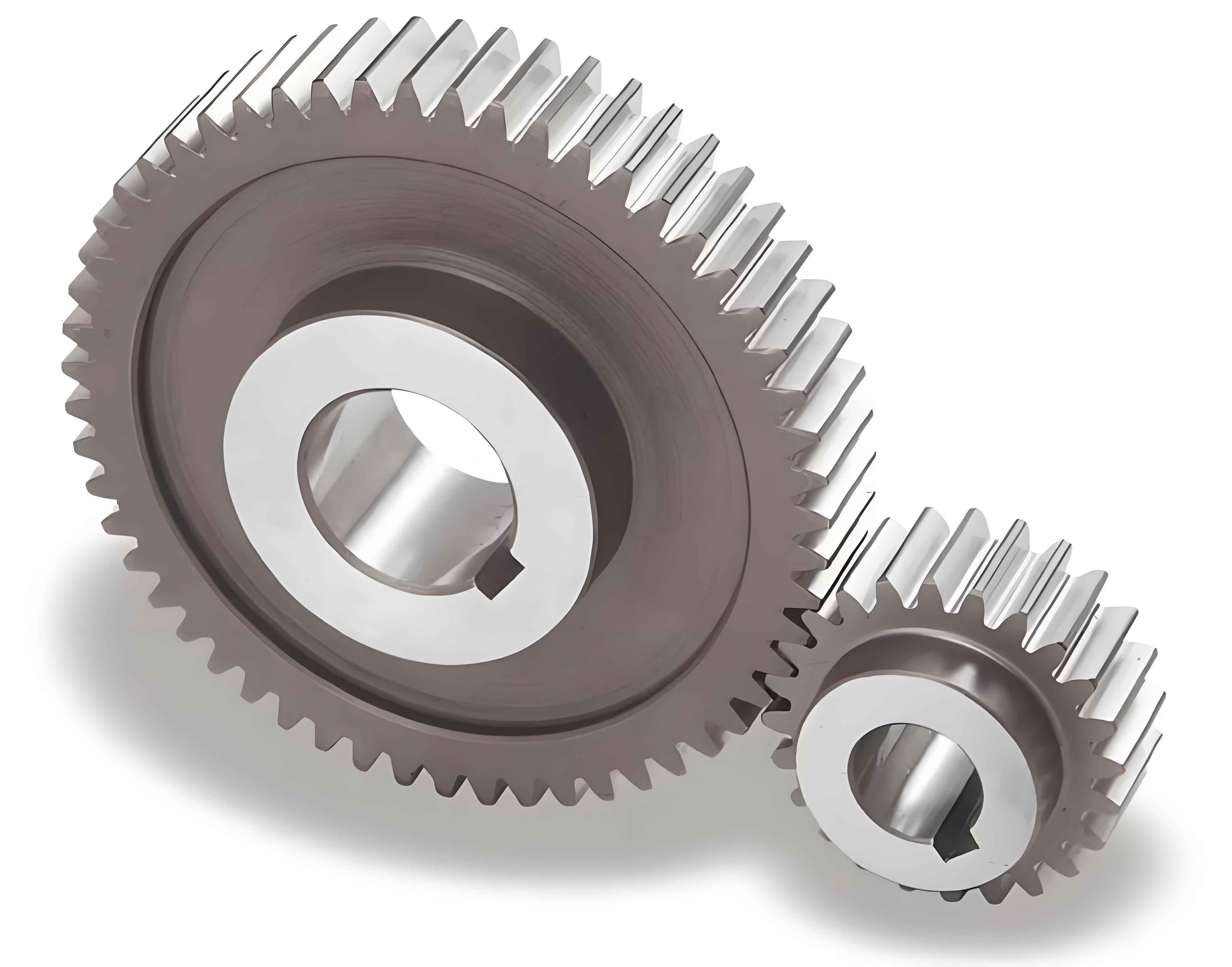Noise in spur gear systems can arise from various sources, including gear tooth impacts, vibrations, and interactions between mating surfaces. Effective noise reduction strategies involve optimizing gear design, manufacturing processes, lubrication, and operational practices. Here are several key strategies to reduce noise in spur gear systems:

1. Gear Design Optimization
- Profile Modification:
- Tip Relief: Slightly removing material from the tips of spur gear teeth can reduce impact forces as gears mesh, minimizing noise.
- Crowning: Modifying the tooth surface to be slightly convex helps distribute load more evenly, reducing vibrations.
- Helical Gears:
- Replacing spur gears with helical gears can reduce noise as helical gears have a more gradual engagement, spreading the load over multiple teeth.
- Pressure Angle:
- Using a higher pressure angle can reduce the force per unit area on gear teeth, potentially lowering noise levels.
- Contact Ratio:
- Increasing the contact ratio (number of teeth in contact at any given time) helps distribute the load more evenly, reducing noise.
2. Material Selection and Treatment
- Material Choice:
- Selecting materials with good damping properties, such as composite materials or high-damping alloys, can absorb vibrations better.
- Heat Treatment:
- Proper heat treatment (e.g., carburizing, nitriding) can enhance the surface hardness and wear resistance of spur gear teeth, reducing noise caused by surface roughness and wear.
- Surface Finish:
- Ensuring a high-quality surface finish on spur gear teeth reduces friction and vibration, leading to lower noise levels.
3. Manufacturing Precision
- Accurate Machining:
- Using precision machining techniques to achieve tight tolerances and high surface finish quality on spur gear teeth can significantly reduce noise.
- Quality Control:
- Implementing rigorous quality control measures during manufacturing to detect and correct defects that could cause noise.
4. Lubrication
- Lubricant Selection:
- Using high-quality lubricants with appropriate viscosity and additives can reduce friction and wear, minimizing noise.
- Regular Maintenance:
- Ensuring that the lubrication system is well-maintained and that spur gears are properly lubricated at all times to prevent noise caused by metal-to-metal contact.
- Lubricant Additives:
- Additives such as anti-wear agents, extreme pressure additives, and noise-reducing compounds can enhance the lubricating properties and reduce noise.
5. Alignment and Assembly
- Proper Alignment:
- Ensuring precise alignment of spur gear shafts and bearings to minimize misalignment-related noise.
- Assembly Techniques:
- Using careful assembly techniques to avoid introducing stresses or misalignments that can lead to increased noise.
6. Vibration Damping
- Damping Materials:
- Adding vibration damping materials (e.g., rubber mounts, damping pads) to the spur gear housing or mounting structure to absorb vibrations.
- Damping Coatings:
- Applying damping coatings to spur gear teeth or housing surfaces to reduce vibrations and noise.
7. Operational Practices
- Load Distribution:
- Avoiding sudden changes in load or speed that can cause spur gear impacts and increase noise.
- Speed Control:
- Operating gears at speeds that minimize resonance and vibration frequencies that contribute to noise.
Summary of Noise Reduction Strategies
| Strategy | Key Techniques and Benefits |
|---|---|
| Gear Design | Profile modification, helical gears, higher pressure angle, increased contact ratio |
| Material Selection | High-damping materials, proper heat treatment, high surface finish |
| Manufacturing | Precision machining, rigorous quality control |
| Lubrication | High-quality lubricants, regular maintenance, additive use |
| Alignment and Assembly | Precise alignment, careful assembly techniques |
| Vibration Damping | Damping materials and coatings |
| Operational Practices | Load distribution, speed control |
Conclusion
Noise reduction in spur gear systems requires a comprehensive approach that includes optimizing gear design, selecting appropriate materials and treatments, ensuring precise manufacturing, maintaining effective lubrication, and employing vibration damping techniques. By addressing these factors, it is possible to significantly reduce noise levels, leading to quieter and more efficient gear operation.
